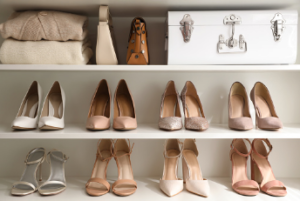Women love shoes in general, and high heels, in particular, are a passion of theirs. From stilettos to platforms, high-heeled footwear is beloved and celebrated across fashion magazines, books, movies, and photos.
Winter high heels can have an immense transformative power. They elongate legs, add an air of confidence, and can even make feet appear sexier – but did you know they were initially designed as footwear for men?
Origin
 Heels have long been associated with feminine beauty and seduction; however, this wasn’t always the case. While heels have existed since ancient Egypt, their popularity as fashionable women’s attire wasn’t widely acknowledged until the mid-19th century when film and photography enabled more widespread coverage of high-heeled women around the globe.
Heels have long been associated with feminine beauty and seduction; however, this wasn’t always the case. While heels have existed since ancient Egypt, their popularity as fashionable women’s attire wasn’t widely acknowledged until the mid-19th century when film and photography enabled more widespread coverage of high-heeled women around the globe.
Winter high heels provide more than just aesthetic benefits – they also offer practical ones! Heels allow you to stand taller without straining your legs, can help tone muscles more evenly across your body, and help navigate uneven terrain more easily.
Styles
Women’s heels come in all styles and shapes imaginable – from corset closures to classic buckle straps – making for the perfect additions to bodycon dresses for a chic and seductive look.
High heels can add inches to your height, lengthen your legs for an elongated and lean appearance and improve posture and balance. They can also accentuate the curves of calves and feet for a more feminine aesthetic and may help relieve any associated foot pain from certain medical conditions.
In the 18th century, winter high heels were an indispensable component of luxury fashion, with designers creating new types of heel and platform shoe styles to give female royalty and upper-class women an air of feminine seduction. By the first half of the 20th century, pin-up girls and second-wave feminism helped high heels gain widespread popularity; stars like Marilyn Monroe and Audrey Hepburn further this cause. Finally, with the invention of sewing machines came mass production of affordable heels, eventually leading to widespread adoption.
Materials
The lining of a high-heeled shoe protects and separates your foot from the internal seams of the shoe while also helping absorb sweat, reduce odours, and make for greater comfort.
Outsoles are the bottom of high heels most exposed to the ground, made up of leather, rubber, wood, PVC compounds, plastic or cement and can be tailored specifically to each shoe style.
The top portion of a heel bears most of the impact with the ground, so it must be resilient enough to withstand repeated shock waves from walking on it. Stiffeners are sturdy materials attached to high-heeled shoes’ back counters that give shape to this area while also helping prevent it from bending with every step.
Traction
High heels exude elegance and add an air of poise to women’s appearance, giving them an instant boost that subconsciously indicates youth and health. Scientific studies have confirmed this effect: men tend to gravitate towards women who walk in heels.
High-heeled shoes feature heels crafted from rubber or plastic and may feature an optional platform to increase their height. Platforms are especially beneficial in making high heels more comfortable for extended periods.
Walking in heels causes the medial gastrocnemius muscle bundles in your calf to shorten and stiffen to reduce stress on the foot and ankle, straining your Achilles tendon and leading to pain in both heel and arch areas.
One way to prevent slippery heels is through traction pads or sprays designed to adhere to the soles of shoes – these products can usually be found where grip pads are sold and typically cost between $10-20. Another inexpensive and temporary solution would be hairspray, which temporarily makes shoes adhere to floors.
Health Concerns
As high heels alter body mechanics and impair balance, they are particularly hazardous when worn on uneven surfaces such as cobblestones or potholes, potentially causing women to slip or twist their ankles, leading to long-term wear, increasing lower leg swelling that impedes lymph drainage – potentially contributing to osteoarthritis in knees and hips.
Studies have revealed that men find women wearing heels more appealing, making their legs appear longer by altering lumbar curvature and pelvic tilt. Yet no woman should be forced into wearing them against her will; progress has been made in changing policies at companies that mandate them.


